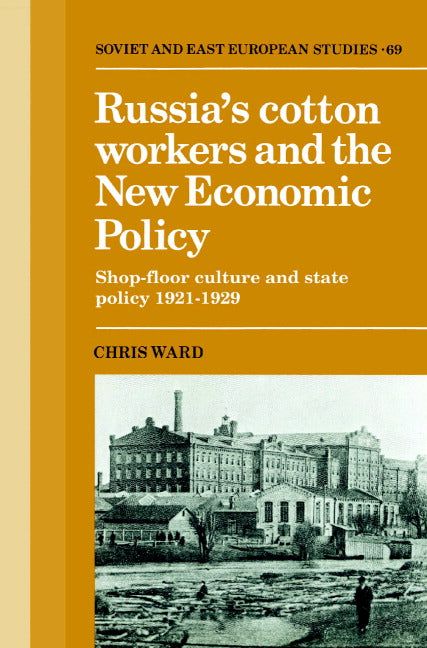Freshly Printed - allow 8 days lead
Couldn't load pickup availability
Russia's Cotton Workers and the New Economic Policy
Shop-Floor Culture and State Policy, 1921–1929
Provides an understanding of key aspects of life on the shop floor of the Russian cotton mill in the 1920s.
Chris Ward (Author)
9780521894272, Cambridge University Press
Paperback, published 20 June 2002
324 pages
23.5 x 15.8 x 2.9 cm, 0.602 kg
"Books on the New Economic Policy (NEP) abound, but this one by Chris Ward is probably one of the finest in the English language on labor during the Soviet 1920s....Ward has managed to present a very fine description and analysis of the behavior of the Russian textile workers during the 1920s. The coverage of topics is exhaustive, ranging from the role the textile industry played in NEP to the composition of the textile workforce, shop-floor culture, and the strike movement....his contribution is undoubtedly significant." Hiroaki Kuromiya, Slavic Review
In Russia's Cotton Workers and the New Economic Policy Chris Ward uses a wide range of published and unpublished Soviet sources to examine key aspects of life on the shop floor of the Russian cotton mill in the 1920s. He reveals the existence of a complex world of work which grew out of the interaction between the experience of industrialisation in late nineteenth- and early twentieth-century Russia and the mechanisation of the cotton industry in Britain in the late eighteenth and early nineteenth centuries. The author explores the manner in which a 'mill culture' emerged from these developments and demonstrates that by the 1920s this culture was often very resistant to change. Russia's Cotton Workers and the New Economic Policy provides a realistic understanding of the relationship between worker, state policy and technology in Russia in the 1920s.
List of plates
List of tables
Acknowledgements
List of abbreviations
Maps
Introduction
Part I. The New Economic Policy and Cotton: 1. Industry
2. Workforce
Part II. The Mill: 3. Field and factory
4. Machines and trades
5. Making an operative
6. Workers' institutional commitments
Part III. The Crisis of 1923 and its Consequences: 7. The market collapses
8. Organizing Taylorism: production
9. Organizing Taylorism: wages
10. 1925
Part IV. The Crisis of 1927 and its Consequences: 11. Confusion worse confounded
12. Shop-floor responses
13. The end of rationality
Conclusion
Appendix
Bibliography
Index.
Subject Areas: 20th century history: c 1900 to c 2000 [HBLW], European history [HBJD]


